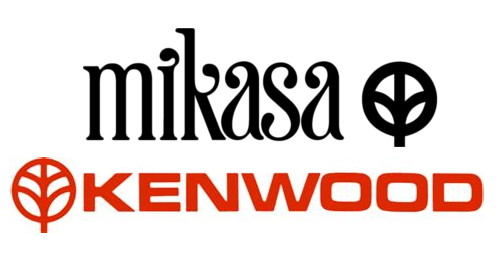
In 1970s Southern California, two brands were pretty big: Kenwood and Mikasa. They rode the Made in Japan trend of the 1960s to the 1980s, but they were both American companies, founded George Aratani, a local nisei guy.
Mikasa
Mikasa, despite it’s Japanese-sounding name, was an American company. A mountain near Nara’s called Mikasa. The company, Mikasa, launched in 1957, hired western designers like Ben Seibel, and had its ceramics produced in Japan.
At the time, this was a novel move. Before long, though, many companies would do the same, and have china produced in Japan. A few come to mind: Vern Forbes, Montgomery Ward’s Style House, Gladding McBean’s Franciscan, Harmony House, Eterna, Embassy. American consumer-facing ceramics production consolidated, and, basically ended in the 1970s.
These Japanese plates all shared one quality, which was a porcelain plate with a shiny, glassy, smooth surface. (That, and western place settings.) The designs were generally underglazed, so the designs went on first, then a glaze coat was put on top.
The style was adopted by Taiwan and Korean potteries. Tatung in Taiwan, in particular, has nice china that’s been sold into the US market, substantially. Sango moved their production, which had been in Japan, over to Korea. Now Sango are now producing in China. The next site of production appears to be Indonesia, where Noritake has opened potteries to make stoneware. This movement of global production in no way reflects the history of ceramics, which originated in China, then spread outward; Japanese ceramics were mainly influenced via Korean migrants.
The use of glossy, extremely smooth glazes hasn’t abated. As global production of china has moved (back) to China, shiny glazes still dominate. It’s only in the past decades that there’s been a bit of reaction, and people are opting for crackled glazes, matte glazes, and, Japanese-style oxide and raku glazes, and salt glazes.
Kenwood
Kenwood stereos were rebranded Trio stereos from Japan. Eventually, Trio bought Kenwood, and renamed itself to Kenwood. Later, Kenwood merged with JVC.
Though Kenwood receivers are fairly popular on Ebay, back in the beginning, Kenwood was known for CB radios. Later, they were known for car stereos. As the car stereo and home stereo markets have, basically, evaporated, Kenwood has continued to produce 2-way radio products.

[…] Sony, Toshiba, Sharp, Canon and other familiar brands, but they also included US brands like Mikasa and Panasonic that were US brands with Japanese product. It also includes less familiar imports […]